Title: “Mahakali” – A Fierce Awakening of Shakti in Rounak Rai’s Symbolic Tantra Series
In this electrifying and mystically charged painting, artist Rounak Rai invokes the terrifying and transformative form of the divine feminine — Mahakali — the ultimate embodiment of time (kaal), destruction, and liberation. This artwork is part of Rai’s Tantric Figurative Series, where spirituality, ritual symbolism, and contemporary visual expression intersect with raw emotional intensity.
—
Visual Description: Kali in Her Fiercest Avataar
The central figure is Mahakali, fierce and naked in power, her body adorned with a garland of severed heads, limbs outstretched, and mouth wide open — drinking blood, devouring ego and illusion. Her tongue, exaggerated in red, signifies the uncontrollable, unstoppable nature of Shakti when awakened.
Her skin is dark and dotted, a textured interpretation of cosmic night or primordial void (shunyata), out of which everything is born and into which everything dissolves.
Around her, headless bodies fall, tumble, and bleed — possibly symbolizing demons of ego, ignorance, and chaos. From her neck rises a fountain of blood, and in that blood we see emerging severed demonic heads with grotesque expressions, representing violence, fear, and delusion being consumed by the goddess.
One of her hands holds a sickle, a farming tool turned into a divine weapon, symbolizing cutting through illusions and worldly attachments.
—
Background and Script: Tantric Energy Field
The entire canvas is saturated in a vivid, deep blue field, inscribed densely with sacred tantric mantras — repeated phrases like “ॐ काली काली महाकाली” and “श्री श्री श्री…”, creating a mantric vibration visually. The repetition is not decoration — it forms a spiritual field of sound and energy, mirroring the practice of mantra japa (chanting) in Tantra sadhana.
The mantras make the painting itself feel like a yantra (sacred diagram) — something to be meditated upon, not just viewed.
—
Symbolism and Tantric Interpretation
Multiple Eyes and Tongues: These are not grotesque but symbolic of divine perception and insatiable hunger for truth. Kali sees all, devours all.
Garland of heads: Symbolizes the destruction of ego and illusory identities — each head a past self, a past sin, or worldly ignorance.
Headless Demons: These may represent asuras (inner or outer demons), who lose their sense of control when divine truth dawns.
Posture (Veer Asan): Her squat stance and wide arms denote power, dominance, and grounding — she is the anchor of cosmic chaos.
—
Artistic Style and Rounak Rai’s Approach
Rounak Rai’s style in this work blends:
Tantric iconography with folk visual traditions, particularly reminiscent of Mithila, Bhil, and Gond tribal detailing.
Flat planes and intense contrasts, where emotion replaces realism.
Ritualistic intensity, allowing the viewer to feel the presence of the divine, rather than merely understand it.
Rai does not portray Kali as merely a mythological figure — here, she is a force, a living archetype of rebellion, liberation, and transcendence.
—
Conclusion: Kali as the Destroyer of Illusion
This painting is not meant to soothe — it is meant to shake, awaken, and confront. Through Mahakali, Rounak Rai invites the viewer into the violent grace of spiritual transformation, where one must lose the ego to be reborn.
Whether viewed through the lens of Tantra, feminism, or contemporary spirituality, this painting stands as a fearless ode to the raw, untamed power of the feminine — both terrifying and liberating.

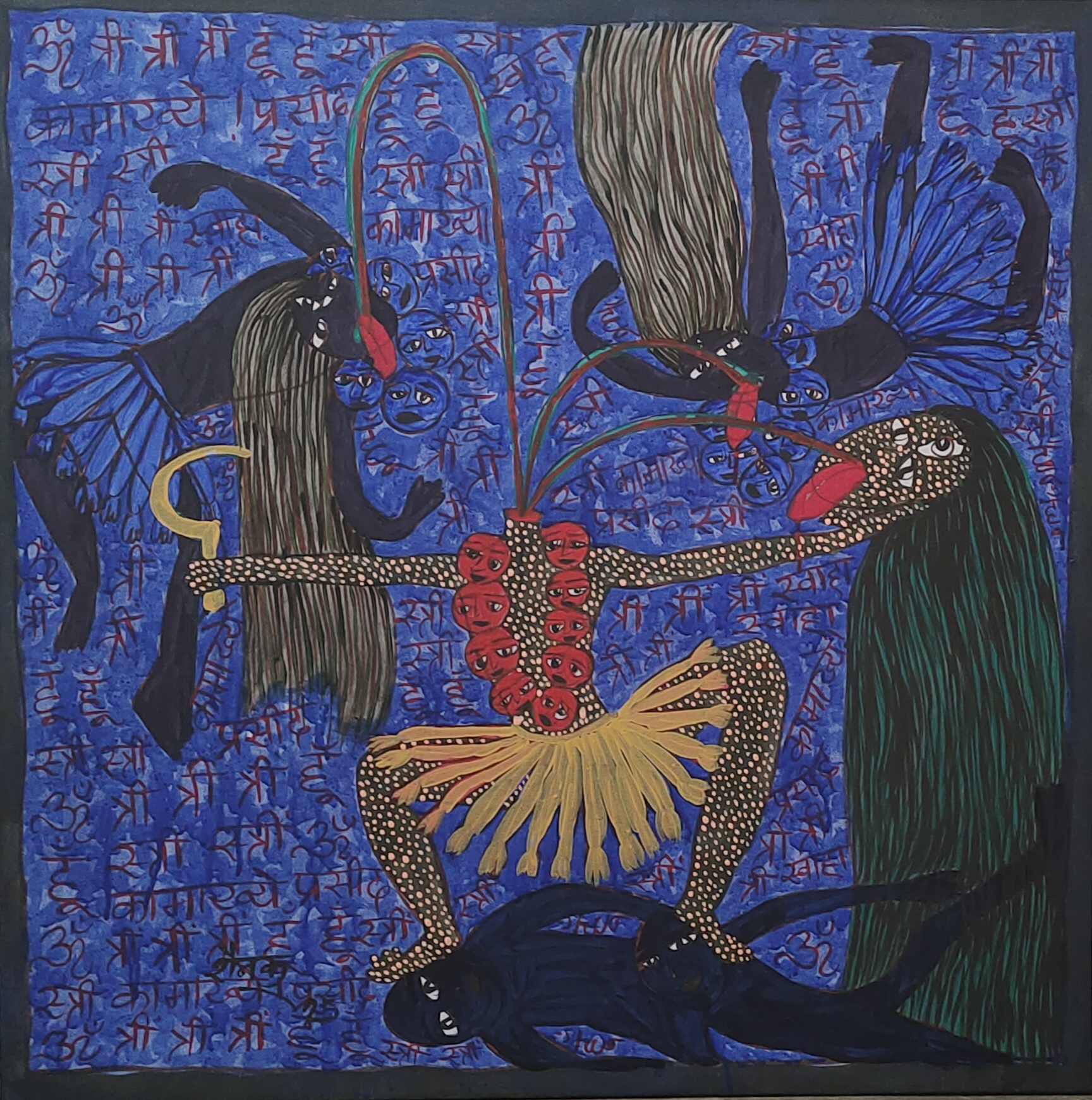
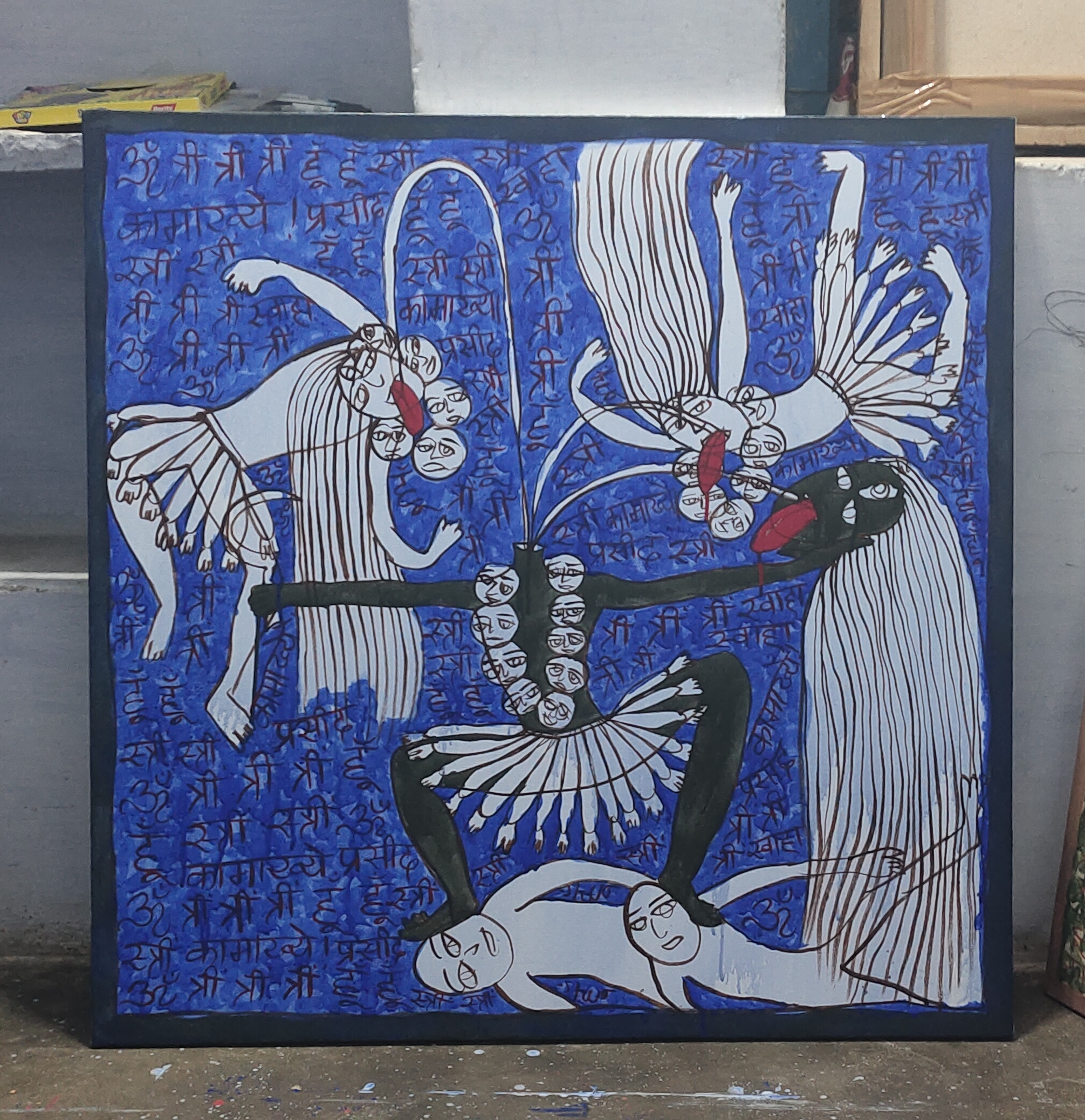
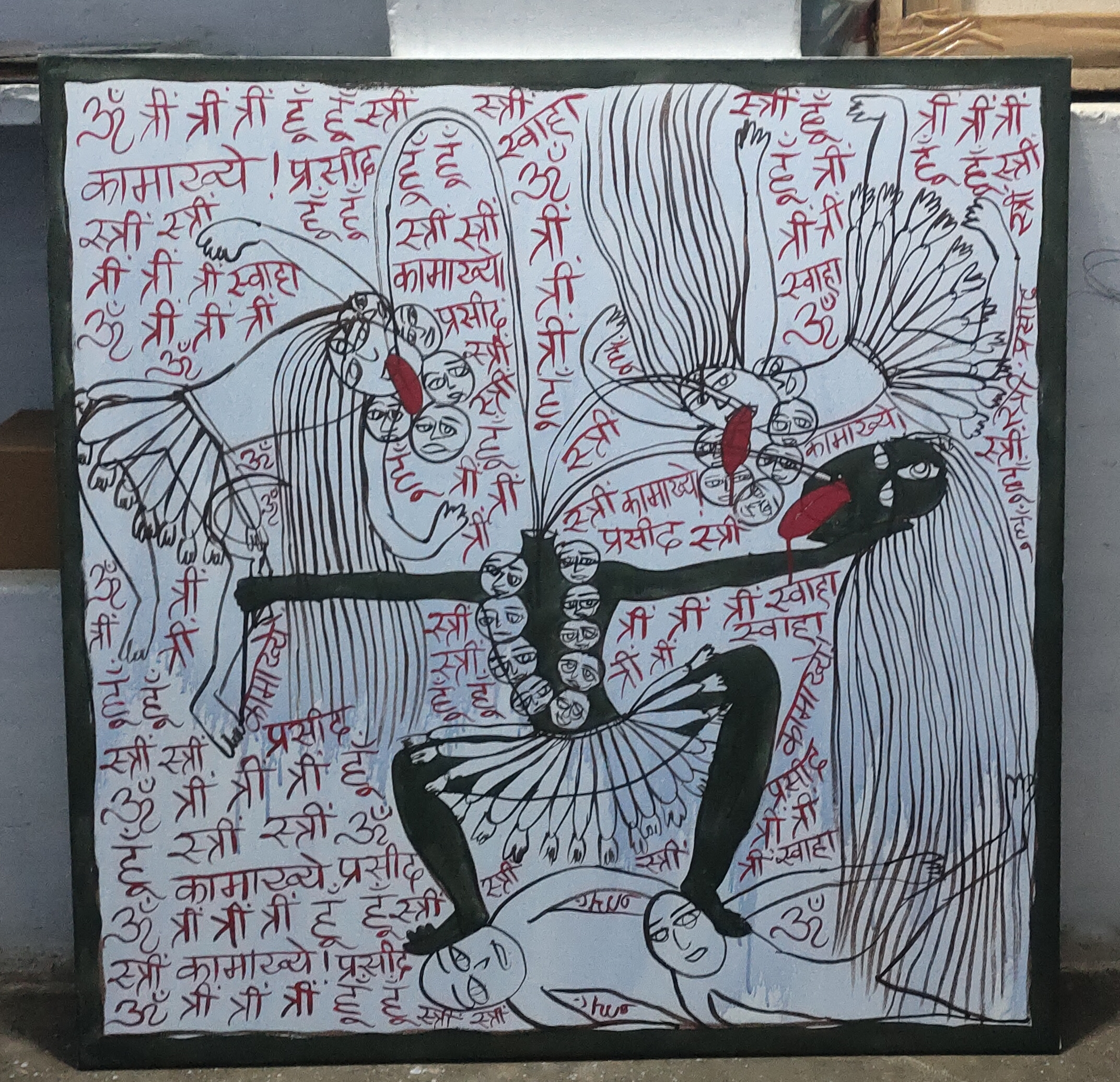
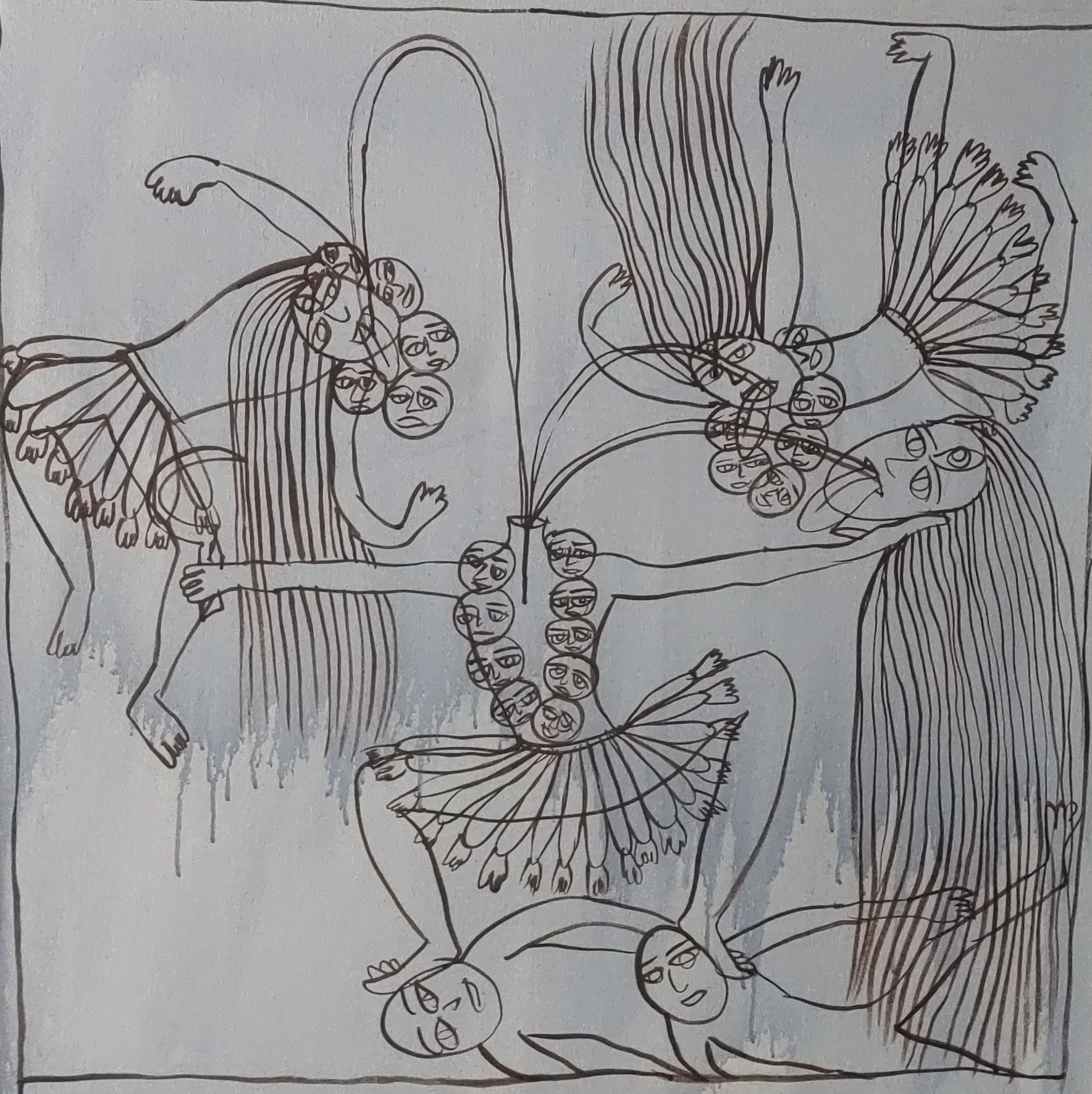
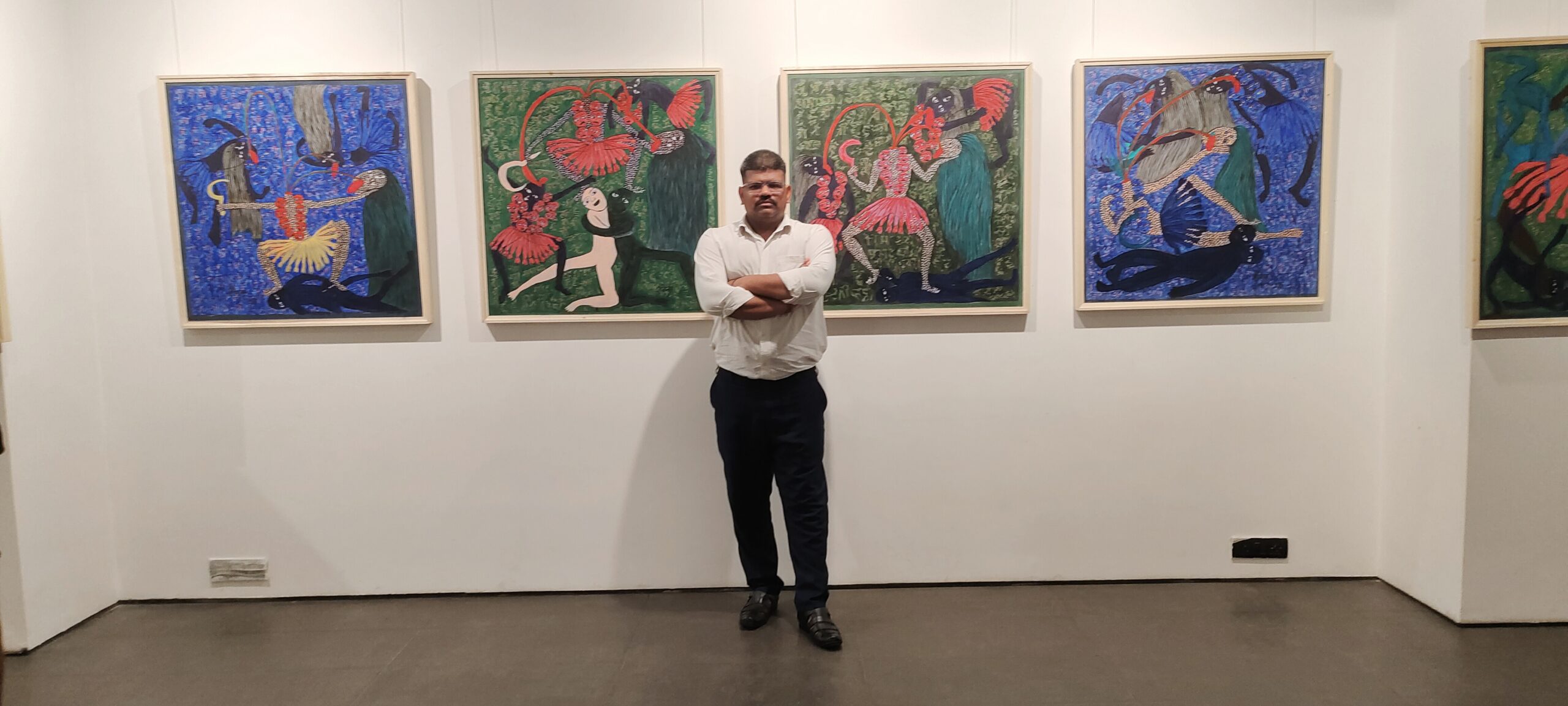
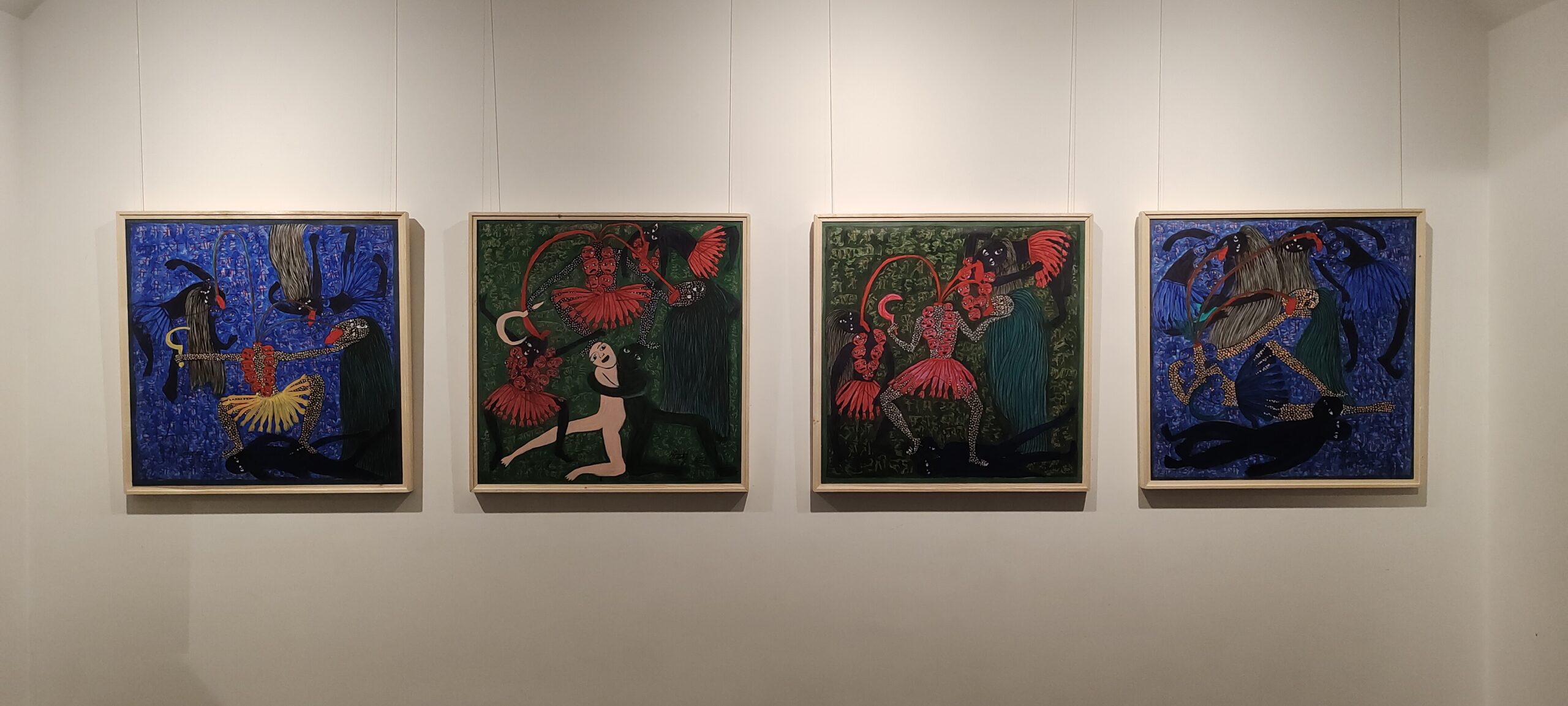
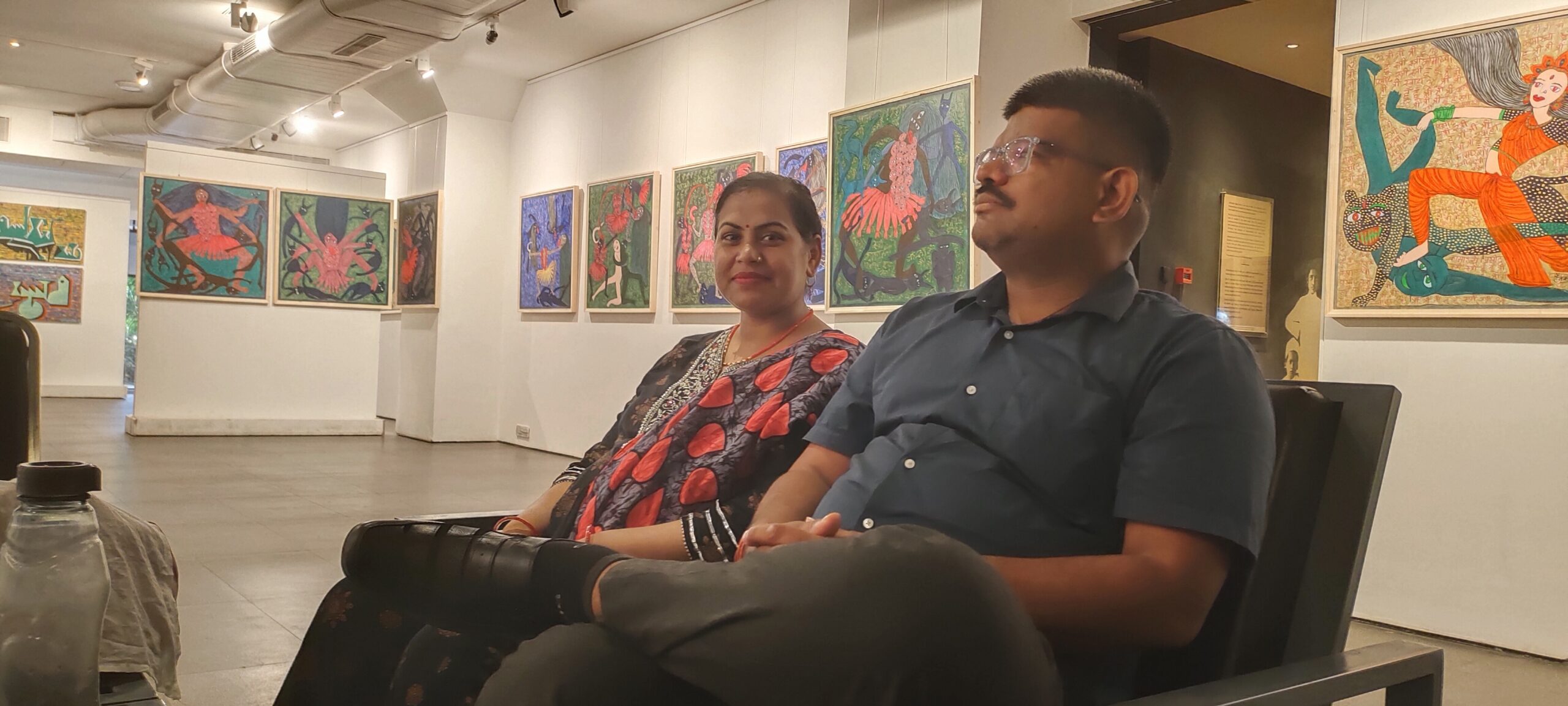
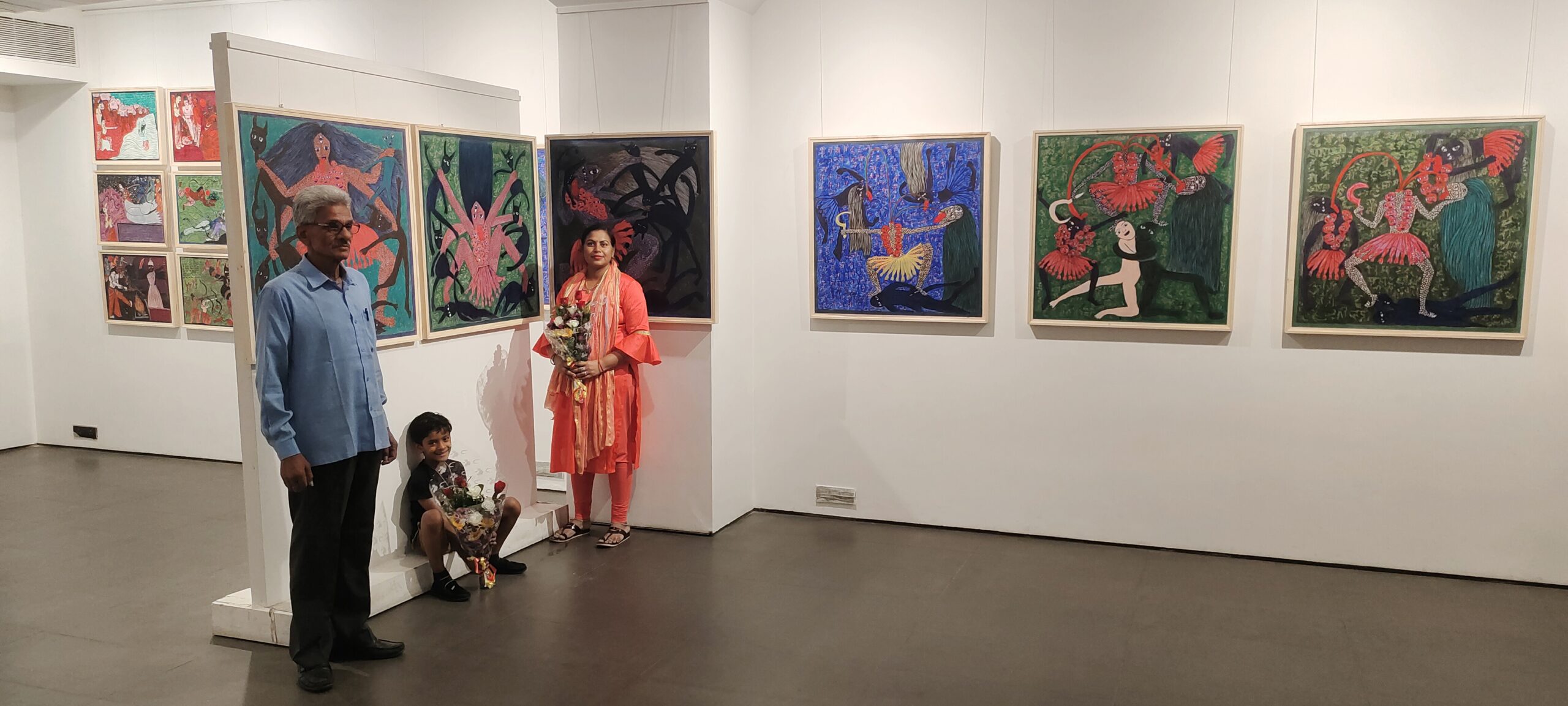
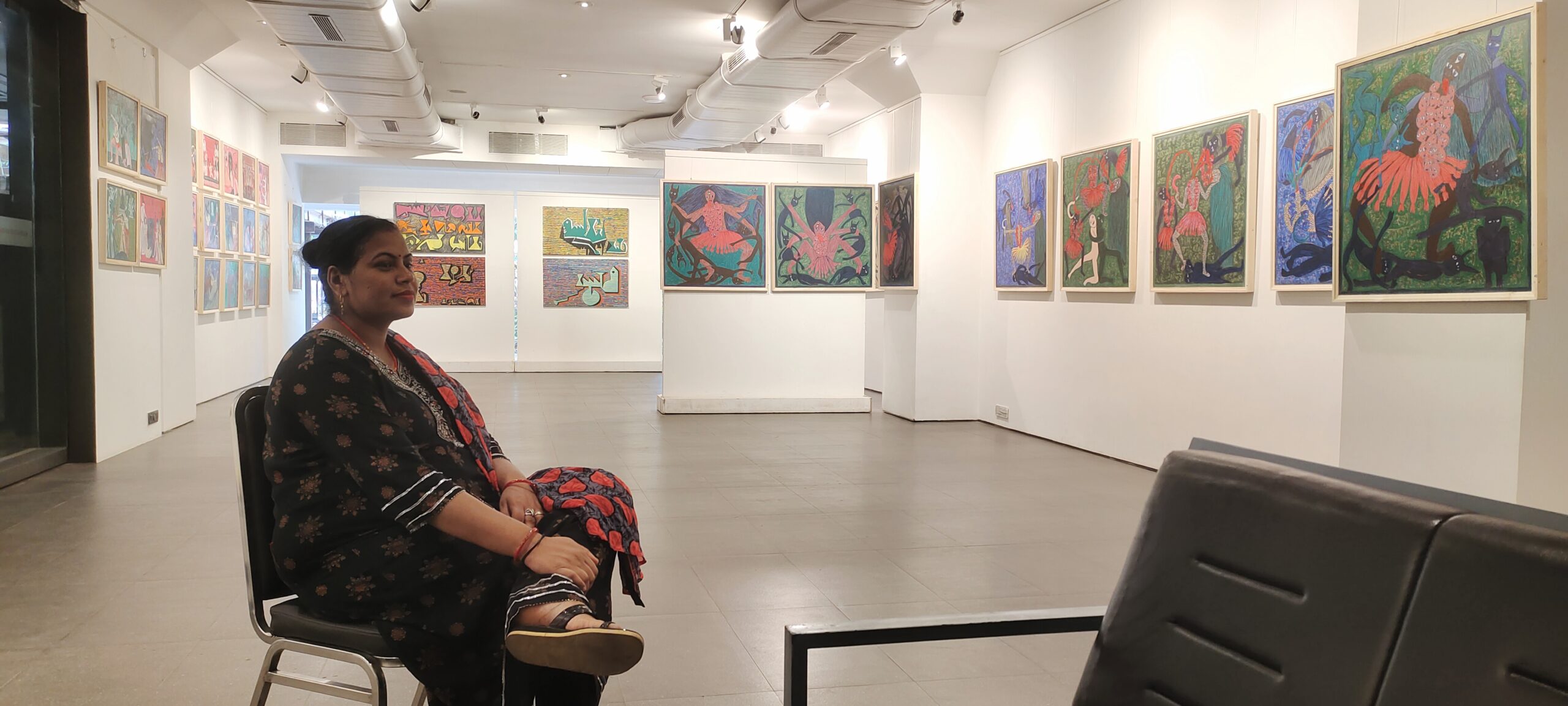
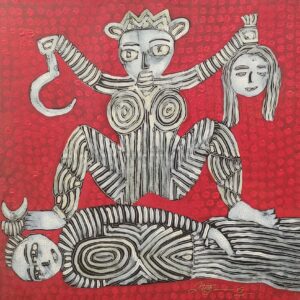
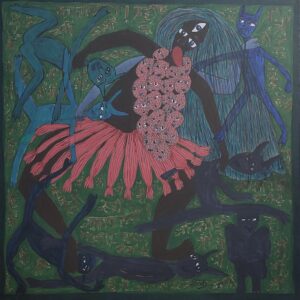
Reviews
There are no reviews yet.